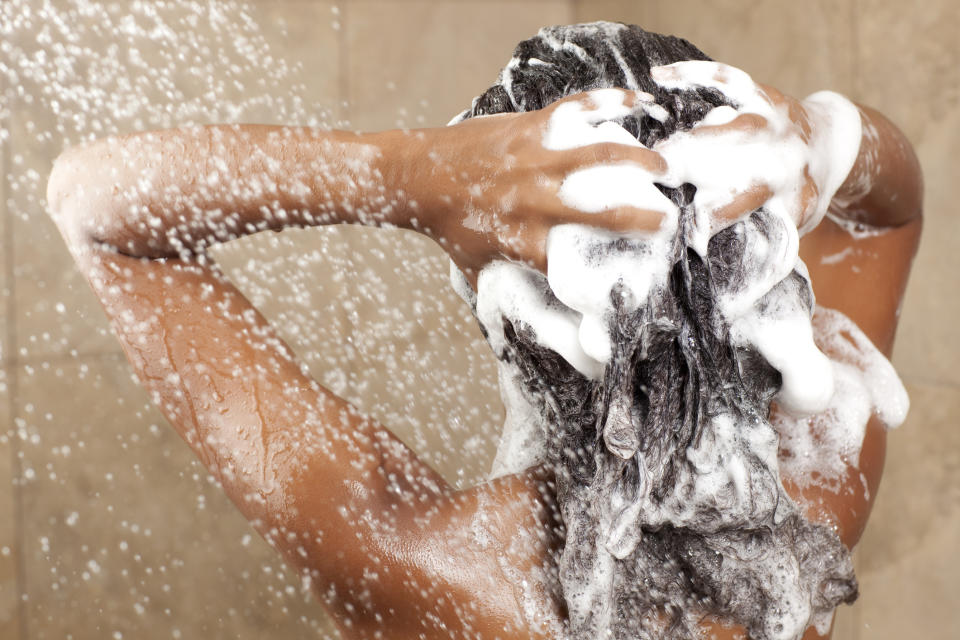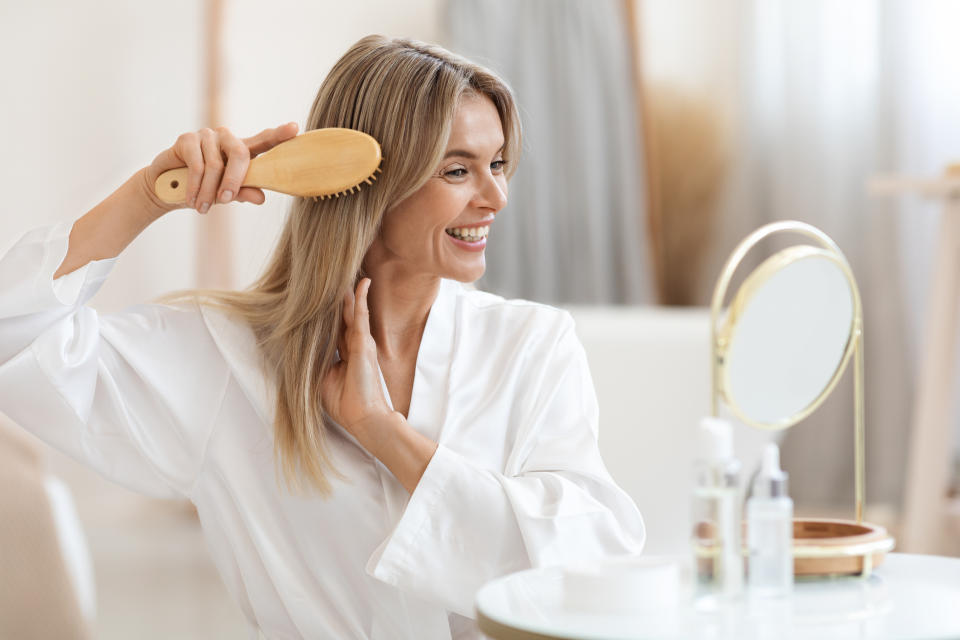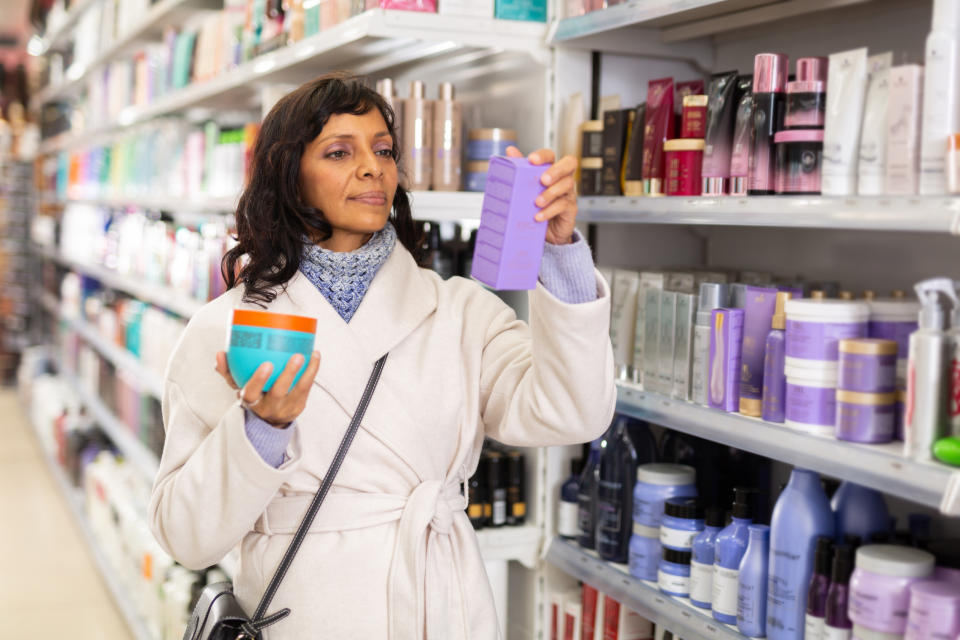Hair Cycling Is the TikTok Trend That Can Make Your Hair Look Healthy, Shiny and Full
Another day, another beauty trend making the rounds on social media — or so it seems. The latest phenomenon to take off alongside latte makeup looks and mascara cocktailing? Hair cycling, which may sound fancy but simply boils down to rotating different products in and out of a given hair care routine. If that feels like something you’ve been hearing about forever, you’re not wrong. “Hair cycling is not anything new, but it has been in the spotlight lately because there are more specialized products to deliver specific results on the market these days,” says Clyde Haygood, celebrity hairstylist and PURA D’OR partner. “Plus, people are playing more with changing their hairstyles daily to suit their mood and fashion style, and they want products that help deliver these results.” The best part? Their are multiple benefits to your hair — enhancing fullness and volume to restoring shine.
Perhaps you've tried the skin cycling trend, and now are thinking about giving hair cycling a try. These pro stylist-approved tips will help you get started so you can make the most out of this practice and reveal your healthiest hair ever. You may even look a little younger and fresher — and have some fun with self-care — in the process.
What is hair cycling?

Hairstylists have been telling their clients to change up their go-to hair products from time to time for ages. Thanks to social media, this concept now has a name, and more people are interested in it than ever. “Hair cycling is alternating or switching up your hair care routine — shampoo/conditioner/treatment — depending on the time of year, weather conditions and/or to address certain hair issues,” says Haygood. “It lets you customize your regimen to receive optimum results.”
Think of it this way: Your hair doesn’t always look or feel exactly the same every single day, so why wouldn’t you adjust your shampoo and conditioner occasionally to better meet its needs at any given moment? For example, maybe you’re dealing with product build-up from blowing out your hair and reaching for your dry shampoo several times in a single week. A deep-cleansing shampoo might be in order after that, but perhaps this same formula would be far too stripping to use regularly, so you stick to something standard most other days. That’s hair cycling. Again, what you choose to cycle your regular shampoo and conditioner with — or add into your routine as a treatment — depends on your hair’s overall condition and takes into account environmental factors (and sometimes hormonal ones, too) as well as the finished style you’re looking to achieve. According to celebrity makeup artist and licensed hairstylist Andrea Claire, traveling to a different climate or undergoing some kind of chemical process in your hair, like coloring it, could also create situations in which hair cycling might be beneficial to course correct what your natural hair might be now experiencing.
What are the benefits of hair cycling?

While Claire maintains that hair cycling isn’t totally essential for good hair and scalp health, you might find that your mane looks fresher, fuller and more youthful when you start rotating your products. This could be for a number of reasons. First, since hair cycling lets you target whatever your hair is experiencing at a given time, Haygood says you can address a deficiency or condition by introducing something with the ingredients to correct it — and then move on once your locks are back on track. Second, because it involves trying new products, hair cycling also consistently sets up a scenario where you could discover the shampoo, conditioner, scalp treatment and/or leave-in product that you never knew you were missing in your life. “It also lets you experiment with different products to find what’s best for your individual hair,” says Haygood. Finally, according to Claire, hair cycling can help you remove build-up from your hair (from heavier conditioners and styling products) and prevent over-conditioning as well, things that can make your hair appear dull and flat, respectively.
Should anyone avoid hair cycling?
Generally speaking, hair cycling is safe for anyone to try. That said, if your mane isn’t really in need of any extra TLC, staying your path is a-okay. “Those whose scalp and hair are looking and feeling great and are happy with the results of what they are currently using might want to skip this trend,” says Haygood. He also adds that those who only shampoo once a week may not feel hair cycling is totally necessary, since there’s not much of an opportunity for swapping in products. And if you’re dealing with hair loss or any chronic scalp conditions, you should see a dermatologist, since swapping products likely won’t be the magical solution to these issues.
How do you do hair cycling?
Because hair can vary so much in terms of length, thickness and texture — and ever-changing environmental factors can throw a wrench in just about any styling goal — there’s not a single recipe for hair cycling. The process involves trial and error, but the good news is you can follow a few of these pro tips to zero in on your best hair cycling routine.
This TikTok by @naprim_naturals_ explains how to do hair cycling:
1. Begin by analyzing your hair
“This usually starts with a deep cleansing or clarifying shampoo,” says Haygood, which can reset your tresses before you truly start cycling in earnest. If you currently have a lot of styling products in rotation, you might want to scale back to just your regular shampoo and conditioner for a week or so, too. This will help get your hair back to its baseline before you start cycling in different things.
2. Introduce a product that targets your biggest hair concern
You can consider addressing anything ranging from dryness and frizz to limp or dull locks, oiliness and beyond. “Pay attention to see if alternating with your regular routine gives you more beneficial results,” says Haygood. Donate any products that aren’t working for you, and be open to moving onto another alternative to find your very best matches.
3. Don’t overcomplicate the process
You don't have to try dozens of products to reap the benefits of hair cycling. It’s all about focusing on your shampoo and conditioner combo — plus, a more intensive treatment here or there. For example, if you have a compromised or dry hair shaft, Claire suggests using a protein or moisturizing hair mask once a week in lieu of your regular (lighter) conditioner. Or add a shampoo formulated for oily hair every other wash, if greasiness or flatness is your concern. You can also commit to hair cycling only when the seasons change, which can make the process more manageable.
What are the best products to use to do hair cycling?

1. A clarifying shampoo
When it comes to hair cycling, stylists say most people can benefit from incorporating a detoxifying shampoo into their routines. “I always suggest to my clients to have a clarifying shampoo for those times when you want a thorough cleansing (once a week for dry hair or every other shampoo for oily/dirty, depending on hair type) or if hair has been styled with an excessive amount of product,” says Haygood. “This will give hair the cleanest, product-free result.” He recommends PURA D’OR Apple Cider Vinegar Thin2Thick Shampoo and Conditioner (Buy from PURA D'OR, $29.99).
Claire agrees and says the frequency of use of these formulas “depends on the styling products you use or if you’re a heavy gym/active person.” The more prone you are to build-up for whatever reason, the more you’d want to sub in a product like this (up to two times a month in her book). She’s partial to Kevin Murphy Maxi Wash (Buy from Amazon, $29.95).
Related: The 8 Best Apple Cider Vinegar Shampoos That Make Hair Look Thicker and Healthy After Just One Wash
2. A scalp scrub, mask or brush
Don’t forget your scalp is part of the hair cycling equation, too. To that end, Haygood often recommends incorporating a scalp serum into a hair care routine, especially if your hair is thin or prone to breakage. Scalp scrubs are an option, too, where build-up is a concern. “Also, treat hair regularly with a specific mask to address any needs,” says Haygood. For extra build-up removal, use a scalp brush when applying products.
Related: Scalp Brush Benefits: How This Inexpensive Tool Can Help Regrow Thinning Hair
3. Moisturizing products
You can’t really go wrong by hair cycling with moisturizing shampoos, conditioners and treatments — even if you have finer or thinner hair. “Moisturizing shampoos and conditioners can be heavy but effective,” says Claire. “The bonus is they generally don’t build-up, as their ingredients are more often than not water-soluble. Cycle [these] one to two times a week, especially with dry or textured hair.” The only thing to really watch out for in this vein? Keratin-based conditioners and protein treatments, which can help with damage when used once a week or every other week but typically not more, unless advised by your stylist. “Build-up of this protein from overuse can lead to breakage,” says Claire.
Finally, when in doubt, no matter what you’re trying to achieve with your hair cycling, use your stylist as a resource for potential product recommendations. After all, yours may even know your hair better than you do!
First For Women aims to feature only the best products and services. We update when possible, but deals expire and prices can change. If you buy something via one of our links, we may earn a commission. Questions? Reach us at [email protected]
For more hair tips and tricks, click through these stories:
Simple Ponytail Looks for Everyday: 8 Easy + So Flattering Twists on the Classic Style
The Hidden Secret to Achieving Thicker Looking Hair From Home — In Seconds
This $9 Skin Care Tool Is Study-Proven to Help Hair Grow in Thicker and Lusher
